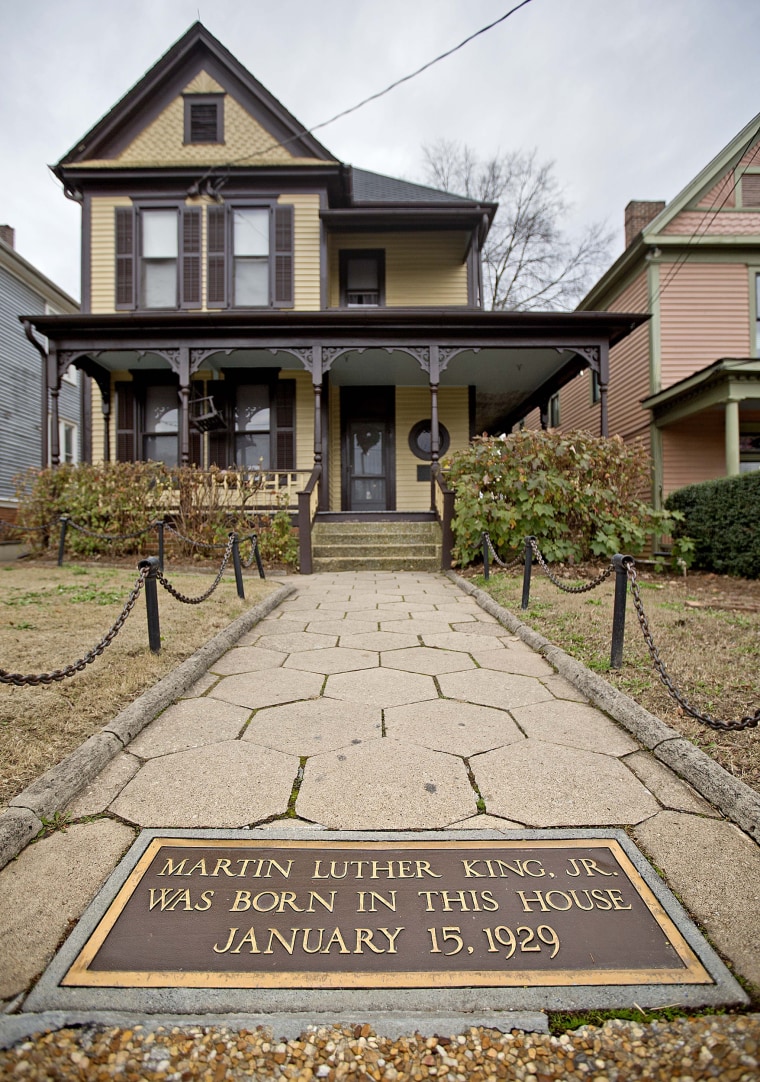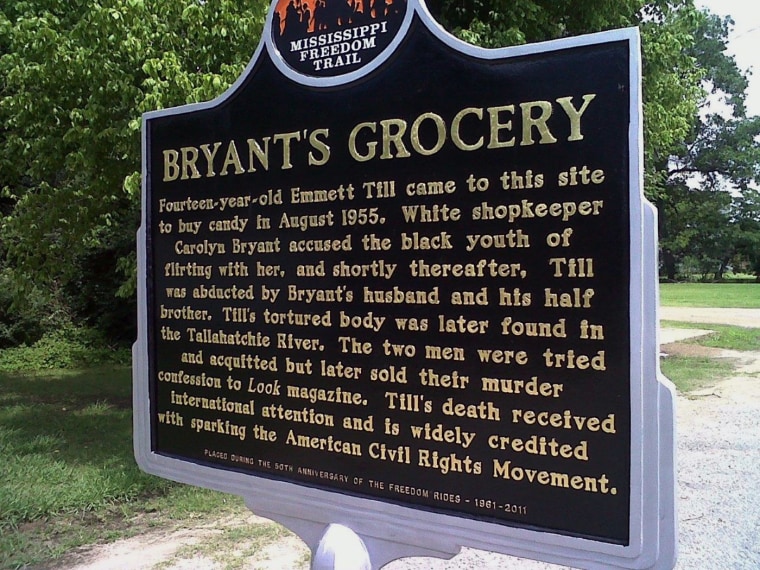For Wanda Battle, serving as a tour guide for the Dexter Avenue King Memorial Baptist Church, the historic red-brick building where Dr. Martin Luther King Jr. accepted his first pastoral assignment, has enriched her soul.
“I have been transformed by this job,” Battle told NBC News. “It’s been a life-changing experience.”
Battle said thousands of tourists travel from across the country and from around the world each year to visit the celebrated church in Montgomery, Alabama, that was designated as a National Historic Landmark in 1974.
“They come to this little church because people want to be inspired by the Civil Rights Movement and Dr. King’s legacy,” she said.

The neighborhood that surrounds the church is immersed in compelling civil rights accounts. Rosa Parks was arrested in Montgomery for refusing give up her bus seat to a white passenger, Dr. King led the Montgomery bus boycott and visitors continue to commemorate the Selma-to-Montgomery March where demonstrators crossed the Edmund Pettus Bridge in 1965.
Today, Dexter Avenue King Memorial Baptist Church is one of over 100 historical landmarks included on the U.S. Civil Rights Trail, which is part of an interactive website focusing on specific locations that explain and honor the Civil Rights Movement, including cities from Topeka, Kansas, to Memphis, Tennessee, from Atlanta, Georgia, to Selma and Birmingham, and Washington, D.C.
Lee Sentell, director of the Alabama Tourism Department, which led the trail project, said many of the historical sites are located in Alabama and across the Deep South.
“We’re sincere when we say what happened here changed the world,” Sentell told NBC News. “These foot soldiers in the Civil Rights Movement inspired people around the country – and around the world – to pursue the concept of passive defiance.”
He added: “Those who focus on [former] Governor George Wallace are missing the point. This is about the black volunteers – and some whites – who were the victors in the struggle to dismantle segregation.”
Sentell, who witnessed one of King’s momentous speeches outside Montgomery in March 1965, encourages people to visit the U.S. Civil Rights Trail.
“These sites were selected not just because something happened there,” Sentell said, “but because we want to give visitors an experience.”
These foot soldiers in the Civil Rights Movement inspired people around the country – and around the world – to pursue the concept of passive defiance.”
At the Dexter Avenue King Memorial Baptist Church, visitors learn about King’s first pastoral position from 1954 to 1960 and view the pulpit King used to preach his sermons and address marchers during social justice demonstrations in Montgomery.
Battle said Alabama’s former Governor George Wallace, who supported racial segregation in Alabama, would not allow King to stand on the steps of the state capitol to speak to marchers following the Selma-to-Montgomery March on Mar. 25, 1965. Demonstrators positioned the pulpit on a flatbed trailer in front of the steps where King delivered one of his groundbreaking speeches.
“When people come to tour the church, I talk about King’s legacy and we discuss human rights issues and issues that matter to people,” Battle said. “We talk about people of different cultures living together and working together on their jobs. We also talk about children growing up in a diverse society and teaching them how to treat people.”

Some of the other historic landmarks on the U.S. Civil Rights Trail include:
- Louisville, Kentucky, where a series of demonstrations and protests advocated for social change in segregated communities.
- New Orleans, Louisiana, a landmark location for public school integration and where Ruby Bridges, at age 6, was the only African-American student to attend William Frantz Elementary upon its integration.
- Raleigh, North Carolina, home to Estey Hall, the first building constructed in the U.S. for the higher education of African-American women.
- Atlanta, Georgia, where Dr. Martin Luther King Jr. grew up in a time of strict segregation. Following in his father and grandfather’s footsteps, King became a minister at Ebenezer Baptist Church.
- Washington, D.C., the site of the United States Supreme Court where the groundbreaking ruling of Brown v. Board of Education was decided.
- Sumner, Mississippi, the site of the Emmett Till murder trial. Till was 14 years old when he was lynched by white men who falsely accused him of gawking at a white woman.
Glenn Eskew, a history professor at Georgia State University and the Director of the Georgia State University World Heritage Initiative, said the Civil Rights Movement is a critical global narrative and a “shared story of bravery and determination by people who worked for social justice and change.”
“These sites represent a reflection of a difficult past, but it also represents reconciliation and embracing social justice reforms,” said Eskew, who contributed many historical landmarks to the Civil Rights Trail. “These landmarks encouraged demonstrations for social justice and racial equality and they are also energizing, inspiring and bring hope for a brighter future.”

Battle, meanwhile, said tourists — some searching for hope — visit Dexter Avenue King Memorial Baptist Church from far-away places such as Japan, The Netherlands, Australia, Canada and England.
“This church is a place that changed the world,” she said. “And it continues to change us all.”

